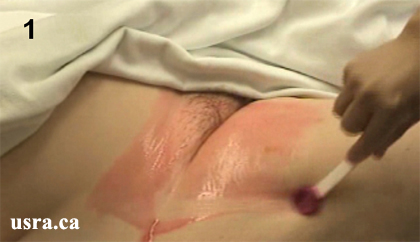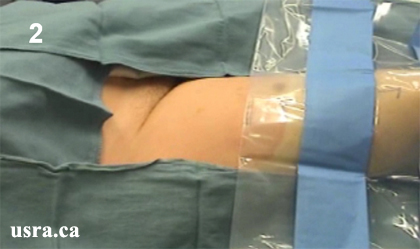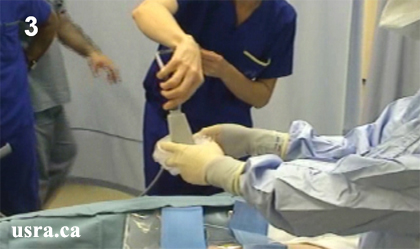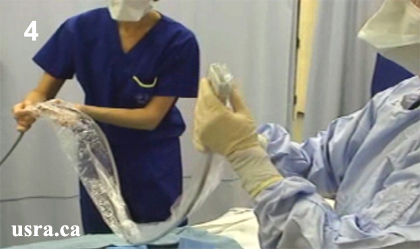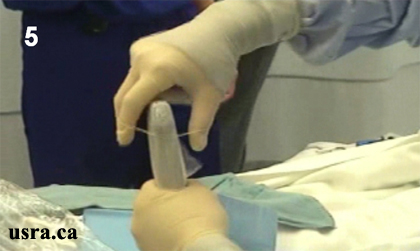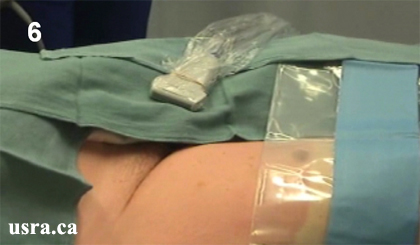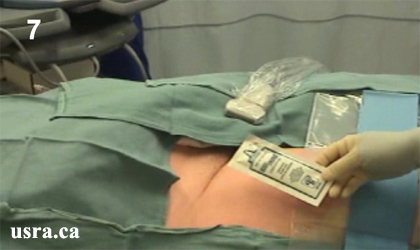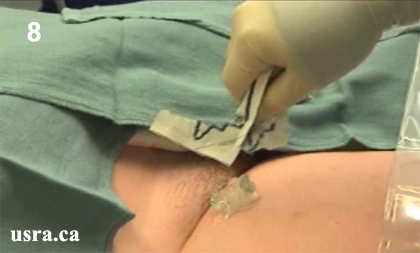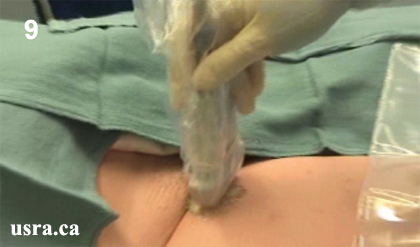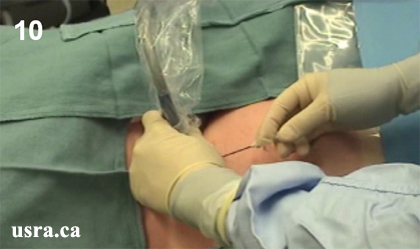Continuous Catheter Placement
- There are two common approaches for catheter placement: the in plane and out of plane approaches. It is the author's preference to use the OUT OF PLANE needle approach for catheter insertion since the catheter is ideally positioned for advancement as it exits the tip of the needle parallel to the long axis of the target nerve.
- Insertion using the IN PLANE needle approach is possible. However, this approach assumes that the catheter can turn 90 degrees upon exiting the tip of the needle to be advanced along the long axis of the nerve.
- The ultrasound transducer and cord are covered completely inside a sterile sheath (see Preparing the Transducer for Single Shot).
- The technique of continuous catheter placement follows the same principle as the single shot injection technique. That is, the procedures for patient positioning, skin preparation and sterilization, and transducer selection are identical.
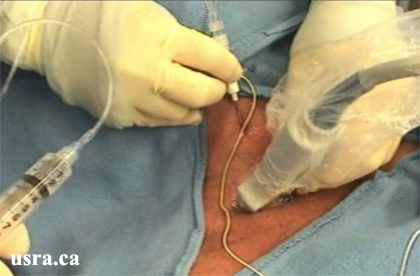
|
|
- Distention of the perineural space will facilitate catheter threading especially in tight spaces e.g., interscalene groove.
- A 20 G stimulating or non stimulating catheter is then inserted 3-5 cm into the perineural space.
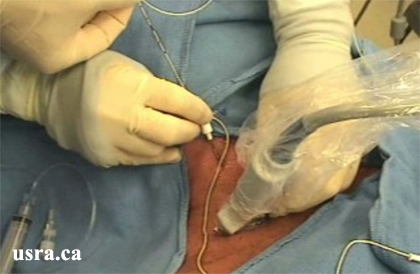
|
|
- It is often difficult to visualize the transverse view of the catheter which appears as a hyperechoic dot.
- After the needle is withdrawn, real time assessment of local anesthetic spread is recommended during injection. Circumferential spread indicates that the catheter tip is located in an optimal position.
- Suboptimal catheter position may be corrected by withdrawing the catheter a short distance before further local anesthetic is injected.
- In the author's opinion, it is exceptionally challenging for the operator to purposefully advance the catheter under real-time ultrasound guidance. However, ultrasound is useful for differentiating circumferential from asymmetrical spread of local anesthetic injected through the catheter.

